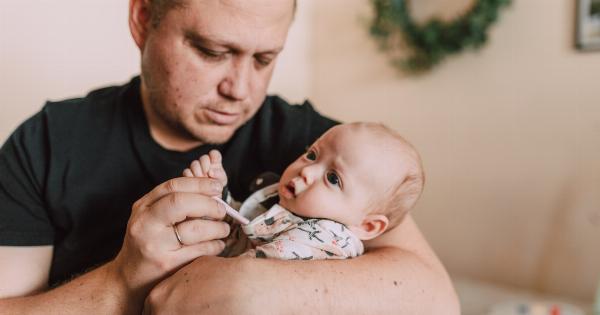When it comes to ensuring the safety and comfort of your baby, one important factor to consider is the temperature of their room.
Babies are more sensitive to temperature changes compared to adults, and maintaining an appropriate room temperature can help promote better sleep, reduce the risk of Sudden Infant Death Syndrome (SIDS), and prevent discomfort.
What is the ideal temperature for a baby room?
The ideal temperature range for a baby’s room is between 68°F (20°C) and 72°F (22°C). This temperature range provides a comfortable environment for most babies and reduces the risk of overheating or getting too cold.
However, it’s important to remember that every baby is different, and you should monitor your baby’s behavior and adjust the temperature accordingly.
Why is maintaining the right temperature important?
Keeping the room temperature within the recommended range is essential for your baby’s health and well-being. Here are some reasons why maintaining the right temperature is important:.
1. Promotes better sleep
Babies need plenty of sleep for their growth and development. A room that is too hot or too cold can disrupt your baby’s sleep, making them fussy and irritable.
By maintaining an optimal temperature, you can create a sleep-friendly environment for your little one.
2. Reduces the risk of SIDS
Studies have shown that overheating is a risk factor for Sudden Infant Death Syndrome (SIDS). Keeping the room temperature within the recommended range reduces the likelihood of overheating, which helps lower the risk of SIDS.
3. Prevents discomfort
Babies cannot regulate their body temperature as effectively as adults. If the room is too hot, it can cause excessive sweating and discomfort.
On the other hand, if the room is too cold, it can make your baby feel chilly and disrupt their overall comfort.
How to maintain the ideal temperature?
Here are some tips to help you maintain the ideal temperature in your baby’s room:.
1. Use a reliable room thermometer
Invest in a good quality room thermometer to accurately measure the temperature. Place it at a level that is easily visible and away from any direct heat sources or drafts.
2. Dress your baby appropriately
Choosing the right clothing for your baby based on the room temperature is crucial. If it’s too warm, opt for lightweight, breathable fabrics.
In cooler temperatures, dress your baby in layers so you can easily adjust their clothing according to the temperature fluctuations.
3. Maintain good air circulation
Proper air circulation is important to prevent the room from becoming stuffy or overly humid. Use a fan or open a window (if it’s safe and the outdoor temperature is suitable) to keep the air fresh and prevent overheating.
4. Adjust bedding and blankets
Ensure your baby’s bedding and blankets are appropriate for the room temperature. Use lightweight blankets during warmer months and thicker blankets during colder months.
Avoid using heavy comforters or quilts, as they can increase the risk of overheating.
5. Be mindful of seasonal variations
It’s important to consider the seasonal variations when maintaining the temperature in your baby’s room. During hot summers, use fans or air conditioners to cool the room down.
In cold winters, use a heater or keep the room adequately insulated to maintain a comfortable temperature.
6. Trust your baby’s cues
Your baby will give you cues if they are too hot or too cold. Watch for signs such as flushed cheeks, sweating, rapid breathing, or shivering. Adjust the temperature based on your baby’s comfort and behavior.
Conclusion
Keeping your baby’s room at a safe and comfortable temperature is essential for their well-being.
The ideal temperature range is between 68°F (20°C) and 72°F (22°C), but it’s important to monitor your baby’s behavior and make adjustments as needed. By maintaining the right temperature, you can help promote better sleep, reduce the risk of SIDS, and prevent discomfort for your little one.































